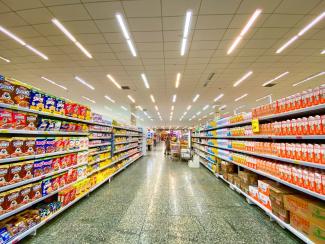
Where Is the Inflation Coming From?
By now you know that the U.S. is experiencing a fairly dramatic inflation rate. The Consumer Price Index rose 7.9% last year, and prices this year are surging as well. The question that is not being asked, however, is how much of these rising prices are a result of supply chain issues and higher worker wage demands, and how much are reflecting higher profits?
If worker pay has gone up at roughly the inflation rate, then we can pinpoint the higher costs that companies are having to pass on at the register. By this measure, however, worker costs are running substantially behind price increases; the average hourly wages across the U.S. economy rose 4.7% last year, while inflation grew by 7.9%.
A more credible place to look for the drivers of inflation is the snafus in the supply chains running here, there and everywhere, only to be held up idling outside of ports or ceasing altogether whenever another bout of Covid strikes. Ocean shippers made nearly $80 billion in the first three quarters of 2021, which is twice as much as in the entire ten-year period from 2010 to 2020. Freight rates have increased tenfold, and companies are effectively paying for ships that stand waiting their turn for weeks outside of major ports. Shipping and associated delays are clearly driving up manufacturing costs.
Even so, the fact that we are seeing high inflation at the same time as corporate profit margins are at their highest level in 70 years cannot be totally coincidental. When Fortune magazine looked at the profit margins on 28 food and consumer goods from manufacturers listed on the Fortune 500, it found that the net profit margins were higher than pre-pandemic levels on 14 of them, and roughly the same on the others. Datasembly, which tracks food and consumer goods manufacturers, found that 11 of a sampling of 18 key consumer products had experienced inflation-beating price increases. JBS, Kellogg, Kimberly Clark and Tyson all raised their prices higher than the current inflation rate, with the JBS steaks and Tyson Buffalo-style chicken bites rising a whopping 34% and 26.7%, respectively. Molson Coors and Procter & Gamble more than doubled their profit margins last year, compared to pre-pandemic levels.
It’s helpful to remember, when members of Congress throw around terms like ‘price gouging,’ that any company is legally entitled to set prices at whatever the market will bear. And some of those price increases are set at the store level, so if there is exploitation, it may not be at the manufacturing or production level.
The bottom line is that if customers are willing to pay 25% more for something this year than they did last year, then that’s simply evidence of capitalism at work. But at some point, consumers might stop simply accepting the conventional wisdom from news sources that our current inflation can be directly traced to higher production prices. If that realization ever happens, you can expect people to halt buying. Prices will drop, and corporate profits will fall back to more normal levels—or below.
Sources:
https://fortune.com/2022/02/19/inflation-profits-prices-companies-pandemic/
https://prospect.org/economy/how-we-broke-the-supply-chain-intro/

